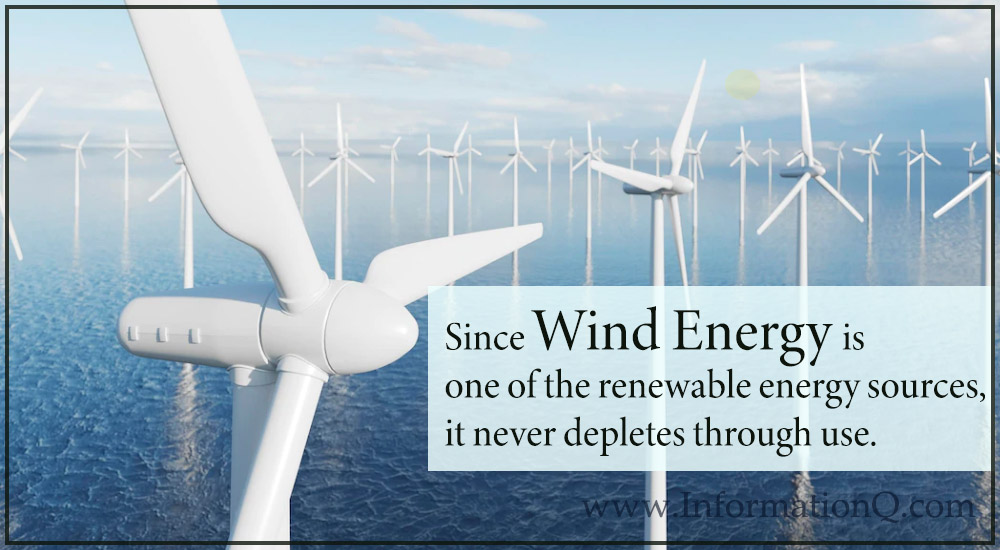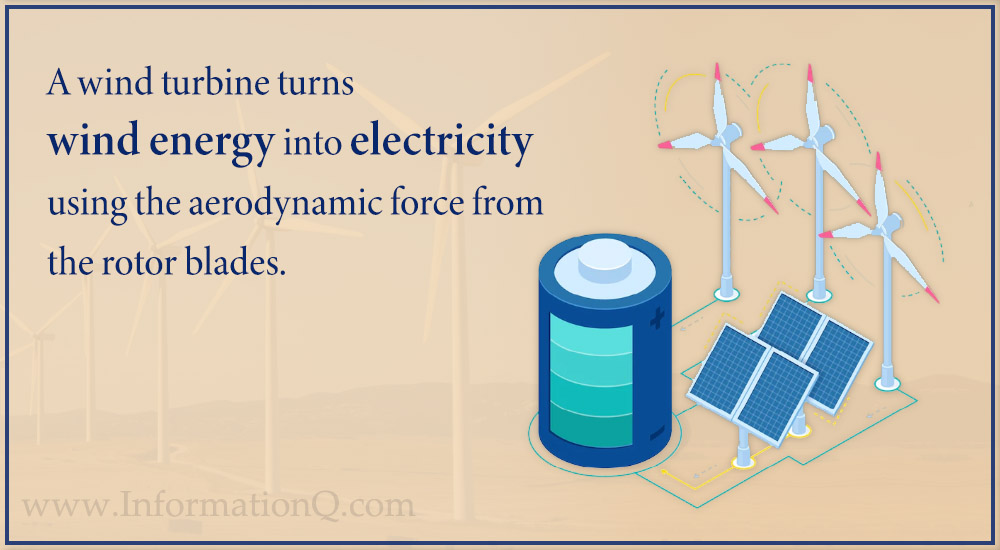What is Wind Energy?
We are blessed with naturally flowing air in our atmosphere. It is possible to create electricity using this natural air, called wind energy. Since wind energy is one of the renewableenergy sources, it never depletes through use. More than that, impact of wind energy usage on the climate and environment is significantly lesser than burning fossil fuels.

Wind Energy: Types
The main three types of wind energy.
Utility-scale wind energy: These are utilized as a source of energy for utility companies and are large-scale projects. These projects are similar to natural power or coal-fired plants. The turbine sizes may exceed 100 kilowatts.
Offshore Wind Energy: These are planned in coastal areas, and they are generally utility-scale projects. These are capable of producing tremendous power in larger cities.
Distributed or Small Scale Wind Energy: These projects are planned in local areas for a specific site and are smaller in physical size.
Types of Wind Turbines
HAWT Wind Turbines:
Horizontal axis wind turbines (HAWT) are the most commonly used. These turbines look like aircraft propellers and are usually mounted on the tower. These Horizontal axis wind turbines must be aligned with the direction of the wind. There are two types of HAWT, and they are:
- Up-Wind Turbines
- Down-Wind Turbines
VAWT Wind Turbines:
In this case of wind turbines, rotors rotate a shaft installed vertically. This design allows less sensitivity when it comes to wind direction. Hence this type of wind turbine is the perfect choice for areas where wind direction changes frequently. Irrespective of the wind direction, blades move, which results in rotating the shaft and producing power. There are four types of VAWT, and they are:
- Savonius TurbinesDarrieus Turbines
- Giromill Turbines
- Cycloturbines



Wind Energy: Advantages
Cost-Effective: One of the lowest-priced energy sources today is utility-scale, land-based wind. It costs 1-2 cents per kilowatt-hour, deducting the production tax credit. The main reason is that the electricity produced from wind farms will be sold at a fixed price over a long period. But, more than that, the fuel is free, and wind energy eliminates the uncertainty compared to traditional energy sources.
Wind energy and jobs: Today, turbine technician is one among the fastest-growing job type, and the wind sector can create plenty of job opportunities. Wind energy can create thousands of job opportunities, including installation, manufacturing, supporting, and maintenance services.
Wind energy is a Clan fuel: Wind energy does not pollute the air compared to other power plants. Other power plants rely entirely on the combustion of fossil fuels like coal or natural gas. As a result, they emit sulfur dioxide or nitrogen oxides and economic damage and human health problems. Wind energy creation never results in atmospheric emissions, and it is a clean fuel source.
It is a domestic energy source: Wind supply is inexhaustible and abundant. It is the largest renewable source of energy in the world.
Wind energy is sustainable: Wind is considered another form of solar energy. Heating of the atmosphere due to the sun causing wind. The wind blows as long as the sun shines, and wind energy can be harnessed as long as the earth exists.
Wind energy is economic: Wind turbines don’t demand dedicated places. They can be planned and implemented on any existing ranches and farms. Wind energy can fuel the economy in rural areas with the best wind sites. Since wind turbines need a fraction of the land, ranchers and farmers can continue farming on the same ground. Wind energy provides an additional income for landowners.



Wind Energy: Challenges
- Even with technological advancements, wind power still competes with traditional energy sources regarding cost. In the past few decades, wind power cost has dramatically reduced. But, even now, they compete with the lowest-cost energy sources of electricity.
- Some locations may not have sufficient wind to implement wind turbines.
- Usually, good land-based sites are placed in remote areas far from cities with electricity demand. Hence transmission lines must be installed to bring the generated wind to towns.
- Wind energy development may not be the highest profitable usage of land. Hence wind turbine installation should always compete with other fruitful land uses. However, these beneficial uses may be precious compared to electricity generation.
- Wind turbines result in aesthetic and noise pollution. Even though wind turbines have the most negligible impact on the environment compared to other traditional power plants, there will be concerns about noise pollution. So, visual impacts and noise produced by turbine blades are challenges
Read also this
What is Solar Energy?
Read more ‘Electrical Energy’ posts
Read more ‘Renewable Energy Sources’
Conclusion
When appropriately implemented, wind energy can generate non-polluting and low-cost electricity. Wind farm causes zero or minimal wastage. There is nothing to dump or cart away from a wind farm. It needs water to cool machinery, but there is no waste to scrub or clean. Once after installation, wind turbines do not demand any operating cost since wind is free.
Leave a Reply